Going car-less in L.A.: The environmental benefits and economic costs
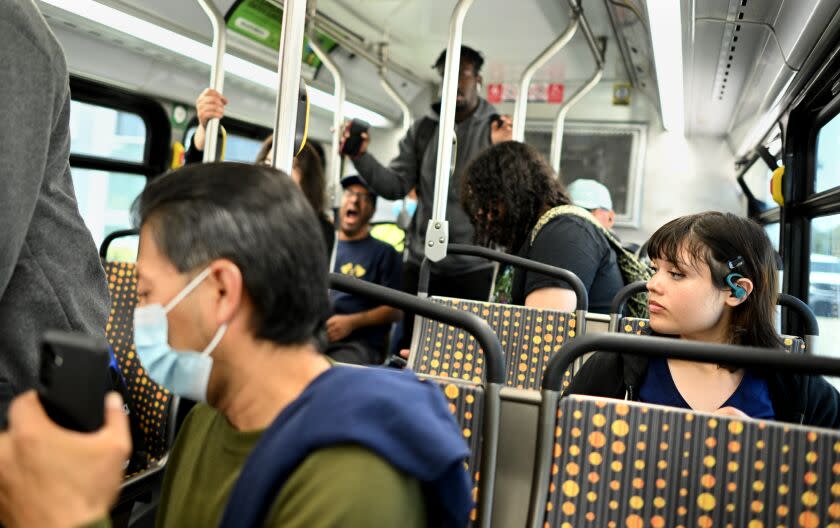
Art Gardner's father instilled a passion in his son: Cars equal freedom, especially in Southern California. And for years, as Gardner was zipping around, top down in his gray convertible, it seemed true.
Then, Gardner moved to a two-bedroom apartment in Mar Vista in 2016. There was a grocery store across the street. Three bus lines ran frequently within a block of his home. There were bike rentals. Parking was scarce.
It turned out that the community was his "15-minute city."
The term, coined by French academic Carlos Moreno, describes much of what many urban planners have sought to achieve over the years — cities designed to have work, healthcare, school and cultural outlets within walking or bike riding distance from home.
It's a model California planners will have to think about a lot more as air regulators attempt to slash the number of miles people drive. To meet climate goals, regulators want drivers to cut their mileage by a quarter of their pre-pandemic levels by 2030. That effort could lead to more car-less people like Gardner and more communities with easy access to transportation.
Apart from New York, which has the nation's lowest rate of car ownership, most cities are designed around cars — and nowhere more so than L.A., home to the first freeway, the first drive-thru and the first drive-in.
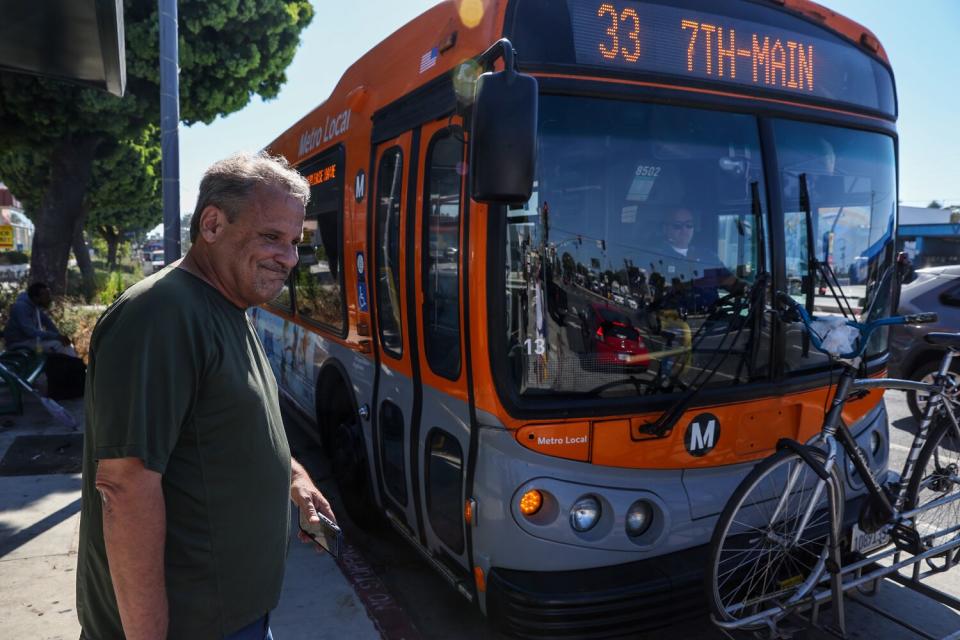
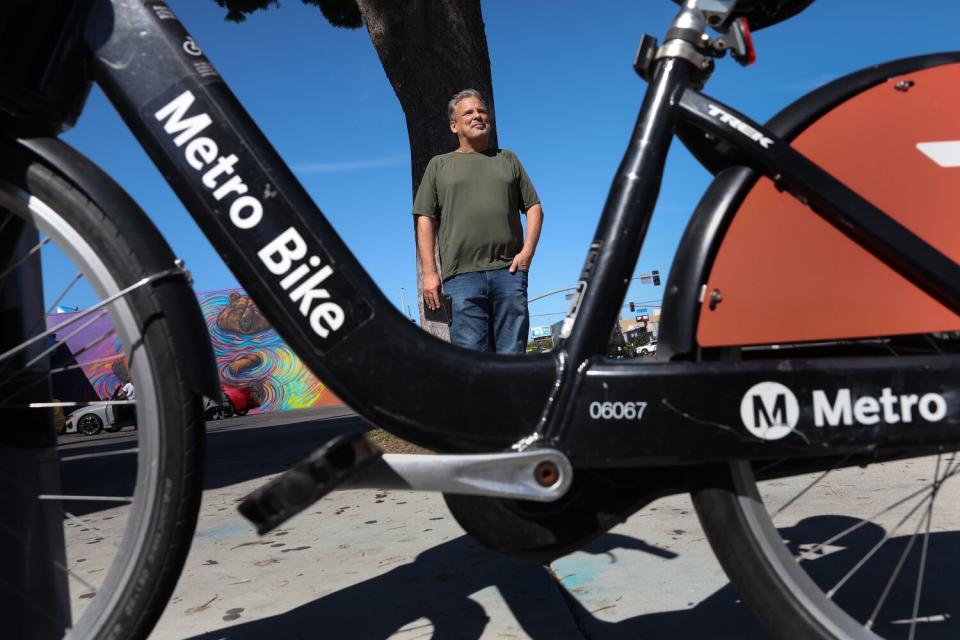
About 7% of Southern California households don't have access to four wheels. Many of them rely on public transit; others also use a combination of bicycles or scooters — which can be more direct and, in some cases, faster. For those who can afford it, ride-sharing through services or friends is an option.
"Because of where I live, I didn't need a car," Gardner said, while admitting: "I didn't want to let it go."
For months after he moved to Mar Vista in 2016, he parked his 2005 Toyota Camry Solara next to the curb. The catalytic converter broke down. Parking tickets piled up. But he still couldn't give up the beloved car that took him up and down the coast as well as to Las Vegas and New Orleans.
More than 90% of all U.S. households have access to at least one car. Most Americans — more than one third — drive alone to work. The personal vehicle is the most frequent form of travel — for good reason. It's fast and convenient. But the cost is high — for our pocketbooks and our planet.

When the tow truck finally came for Gardner's car, because its tags were expired, he was at peace — and he hasn't looked back.
"You do have to have some patience; it does take longer," he said. "But it cuts down on the stress. The dead time is actually sitting behind the wheel. I can read, do some work or just relax on the bus. It's more productive and less frustrating."
Gardner, who maintains websites, is 64, single and works from home. He usually travels by bus or train to reach entertainment venues. Most of his friends have cars, and he sometimes asks for a ride. And if he really needs to get somewhere fast or late at night, he calls a ride-sharing service.
It's not that simple for people with limited funds, whether they're single or heads of households.
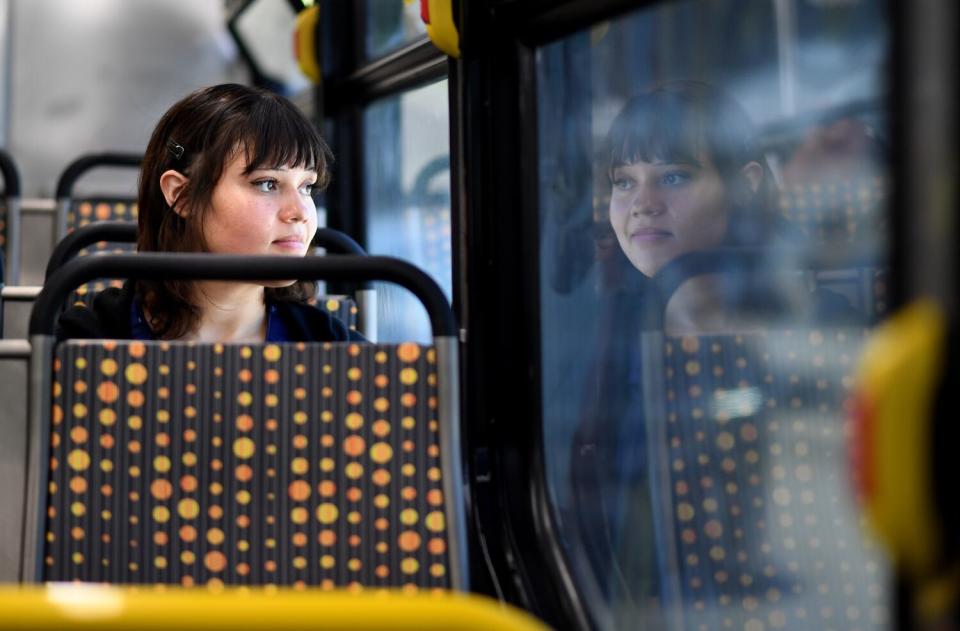
“We are not set up to live without cars at this point in most parts of California," said Jean-Daniel Saphores, a professor and head of the civil and environmental engineering department at UC Irvine.
Saphores, who has studied the car-less population, said those folks usually fall into two categories. There are people like Gardner — and California wants more of them— who choose not to have a car for a variety of reasons, whether it be health, convenience, the environment or something else. They are often childless and tend to live in transit-rich areas that enable their lifestyle.
The other group is made up of people who can't afford cars, Saphores said. Like people who choose not to have an auto, they travel far fewer miles than car owners and take more purposeful trips. Many tend to live farther away from areas that are well served by transit.
Tamara Cedillo, 23, spends about "four long hours" a day traveling by bus to and from the three-bedroom house she shares with roommates in Carson to an externship as a medical assistant at the Torrance Urology Clinic. By car, the trip would take less than 30 minutes, but by bus it can take two hours.
"That's the annoying part," she said. "It's not even that far."
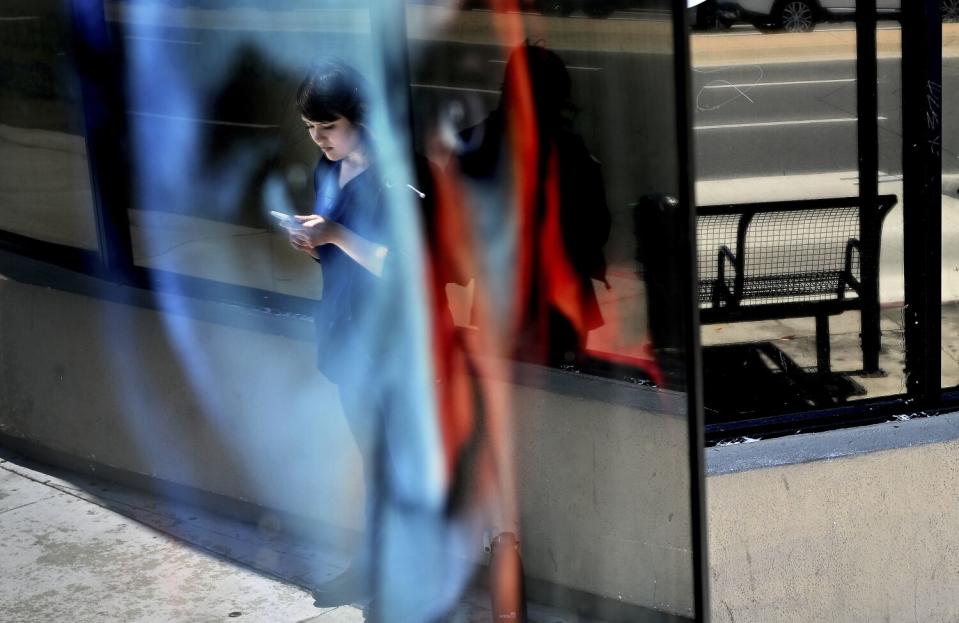
Then, as the sun goes down, Cedillo uses a ride-share company to get to her full-time job working the night shift at the Hawaiian King warehouse in Torrance.
"I need a car," she said. "My life depends on it."
Cedillo's last car was towed after it was rear-ended in Modesto. She didn't have insurance and couldn't afford the $2,000 she needed to get it out of the tow yard and up to date. Now she pays about $20 a day to get to and from work at night.
Cedillo says that she sleeps about four hours a day but that she could double that if she owned a car. But so far, she's saved only $200 toward that goal. And the costs of owning a vehicle in Southern California can be prohibitive, amounting to thousands of dollars a year to cover insurance, gas and car payments for a reliable auto.
Local transportation officials have attempted to make it easier for people who take public transit to get around. Los Angeles introduced a pilot program in South L.A. last year offering residents $150 a month for public bus and train fares, on-demand shuttles and scooter, bike and electric vehicle rentals. There are 221 Metro Bike Share stations across the region, a $1 local ride-sharing service operated by the Metropolitan Transportation Authority and free and reduced fares for residents under a certain income threshold.
But the automobile continues to loom large as a key to economic opportunity.

Evelyn Blumenberg is an urban planning professor and director of the Lewis Center for Regional Policy Studies at UCLA who has studied the relationship between poverty and car access. She and other scholars have found that cars have enormous benefits — better access to jobs and keeping them — for low-income people.
"Just imagine even looking for a job, right?" Blumenberg said. "Going to multiple destinations, trying to figure it out, going to interviews, all of that. .. It's very difficult to do without an automobile."
But Blumenberg acknowledges that what Los Angeles ultimately needs is less driving.
She believes there needs to be a shift in the conversation about personal vehicles. "We really need to be thinking about managing the driving and [car] ownership among higher income households," she said, adding, "the problem with that is that's politically difficult. Higher income households with cars, they want to drive their cars."
Several large cities, including London and Stockholm, have implemented congestion pricing, a strategy that is being studied locally. Next year, the board of the Los Angeles County Metropolitan Authority will consider creation of a congestion pricing program that would slap tolls on certain roads during peak hours.
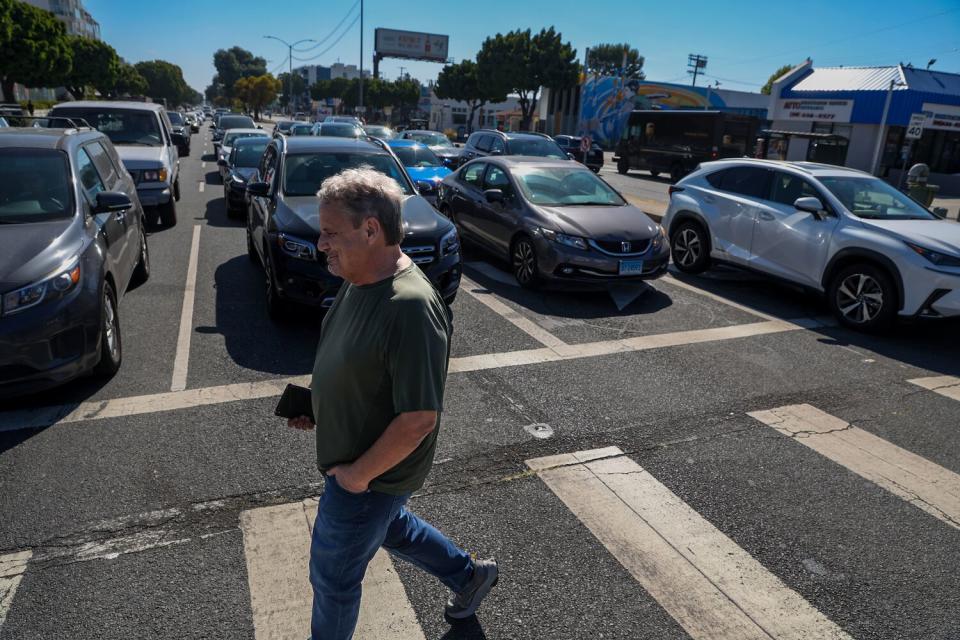
Michael Manville, a UCLA professor of urban planning who has studied congestion pricing, sees roads as a public utility that's undervalued.
"The way that we can square this circle, this trade-off between efficiency and equity, is to set up policies that convince the majority of us to just drive a little bit less, while allowing some people who right now have legitimately constrained mobility to drive a little bit more," he said.
"We want the poorest Californians to have better economic opportunities," Saphores said. "And at the same time, if we want to address climate change, something has to give."
Sign up for Essential California, your daily guide to news, views and life in the Golden State.
This story originally appeared in Los Angeles Times.

